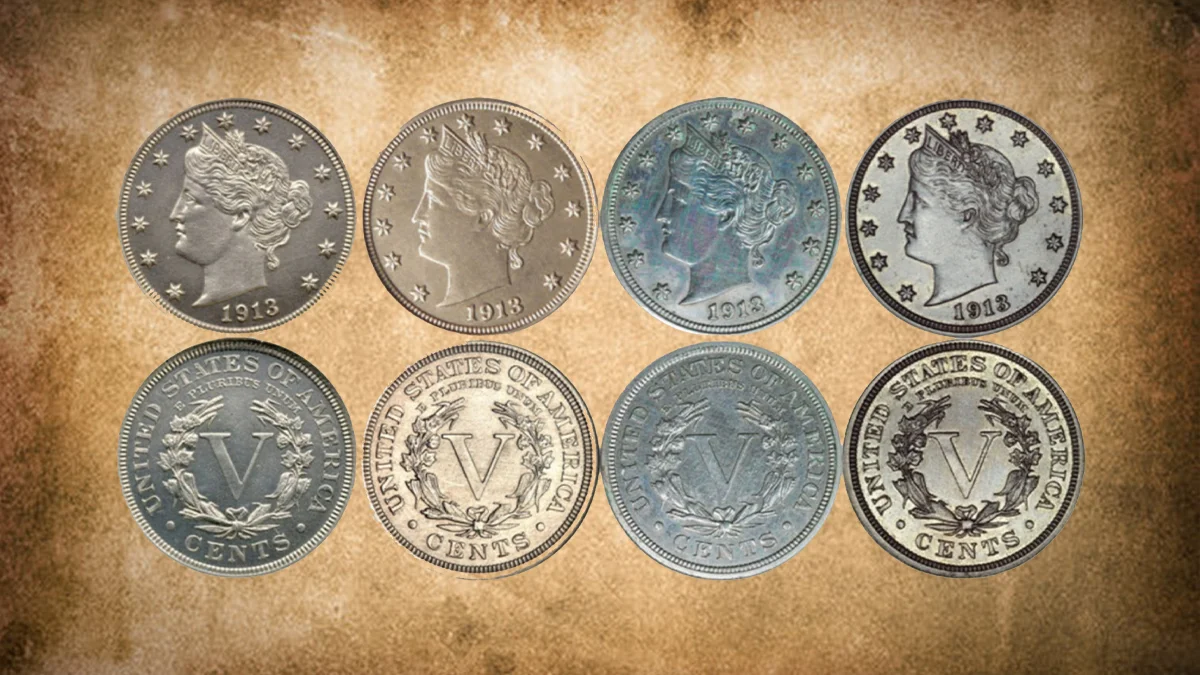
For beginner collectors, grading Liberty nickels can be an amazing adventure, but it usually raises many questions. Determining each coin’s overall look is just as crucial as a technical analysis. To help you properly assess the state of Liberty nickels, this guide will lead you through the grading procedure, highlighting key factors and features.
Understanding Grading Standards
The grading of coins, having Liberty nickels, primarily depends on the Sheldon coin grading scale. It was developed by numismatist William Herbert Sheldon in 1949, this 70-point scale ranks coins from 1 (basal grade) to 70 (mint state). Although the American Numismatic Association (ANA) initially found this scale outdated in 1953, it underwent important modifications in the 1970s, resulting in a more detailed and applicable grading system.
Before diving into grading Liberty nickels, familiarize yourself with the Sheldon Coin Grading Scale to understand how your coins fit within this framework.
The Liberty Nickel: A Brief Overview
Liberty Head nickels, which is also referred to as V-nickels, were made from 1883 to 1913, when the famous Buffalo nickels came their place. The original coins, which were designed by Charles Barber, did not come with the denomination on the back, which could have allowed counterfeiting and confusion with $5 gold coins. The early specimens were rare and collectible because of the US Mint’s prompt response, which led to a redesign that included the denomination.
The stars surrounding the outer border and any flaws should be carefully evaluated when assessing V-nickels because these elements have an important influence on their collectible value.
Key Specifications
- Face Value: Five cents ($0.05)
- Composition: Cupronickel
- Weight: 0.17637 ounces (5 g)
- Diameter: 0.83504 inches (21.2 mm)
- Thickness: 0.07677 inches (1.95 mm)
Despite their historical value, many Liberty nickels are often deemed unattractive by collectors because of design issues and weak strikes. Experts estimate that only 1% to 2% of these coins receive grades better than GOOD.
Grading Liberty Nickels: A Step-by-Step Approach
About Good (AG)
Description: These coins are heavily worn, with almost unknown designs.
- Obverse: Liberty’s head is merely an outline, with most details invisible. The minting year is often faint but still readable.
- Reverse: The V is partially worn away, and other design elements are difficult to discern.
Good (G, G4, G6)
Description: These coins have a full edge and flat design but are still collectible.
- Obverse: The portrait of Lady Liberty is worn, with faint details remaining. The date is visible but faded.
- Reverse: Most details are faded but recognizable, with a smooth appearance.
Very Good (VG, VG8, VG10)
Description: A minimum of three visible letters in “LIBERTY” is required for this grade.
- Obverse: The headband must show at least three letters. The bottom edge of the coronet and some hair details may be flat.
- Reverse: The wreath is worn but recognizable, and the inscriptions are readable.
Fine (F, F12, F15)
Description: Moderate wear with distinct details makes these coins collectible.
- Obverse: All letters in “LIBERTY” are visible, but subtle details are flattened.
- Reverse Clear lettering, although the design may appear merged.
Very Fine (VF, VF20, VF25, VF30, VF35)
Description: Highly desirable among collectors due to their condition.
- Obverse: The word “LIBERTY” is bold, with significant detail in Liberty’s hair.
- Reverse: The lettering and V are readable, with some leaves in the wreath showing wear.
Extra Fine (EF40, EF45)
Description: Coins with minimal wear but soft color and detail.
- Obverse: Slight wear on high points, with most details intact.
- Reverse: Letters remain defined, and the wreath shows distinct features.
About Uncirculated (AU50, AU55, AU58)
Description: Coins in this grade show only light signs of circulation.
- Obverse: Minimal wear on high points; mint luster may still be present.
- Reverse: Light wear visible, with clear lettering.
Mint State (MS60 to MS70)
Description: These coins exhibit full mint luster with no signs of wear.
- MS 60: May show contact marks but retains some luster.
- MS 65: Attractive luster with minor imperfections.
- MS 67: High-quality coins with nearly perfect appearance, maintaining original color.
Also Read – 1897 Indian Head Penny: Value, History, and Rarity
Bottom Line:
Liberty nickel grading is a science and an art. You may determine each coin’s value in the current market by giving careful attention to the smallest features and understanding the grading criteria. Even though it might seem difficult, you can learn to grade and enjoy these ancient coins with practice and close attention. The adventure of coin collecting awaits you whether you decide to grade your coins yourself or have them graded.